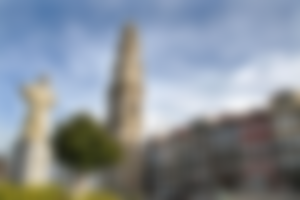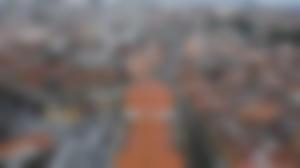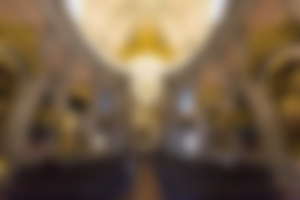The São Pedro dos Clérigos Brotherhood Church, in Porto, is organized into three juxtaposed bodies church, brotherhood dependency and bell tower (Torre dos Clérigos) the latter having such a visual impact that it has become the city's ex-libris.

The project was designed by Nicolau Nasoni, who was born in Italy and worked in Siena, where he will have acquired his basic training. His visit to Rome was followed by a stay in Malta, where he worked for Grand Master D.António Manuel de Vilhena. There he also met Roque Távora and Noronha, brother of the Dean of the Porto Cathedral, D.Jerónimo. It was thus, of course, that he was eventually invited to move to that city, where he was already in 1725, to work at the Sé, where he left his mark.

The first Portuguese work that owes it in its entirety is the church commonly known as "dos clerigos", because it belongs to the brotherhood of the same name, which was then president of the above mentioned Jerónimo Távora and Noronha. The project was approved in 1731 and the following year the laying of the first stone ceremony took place. The works dragged on for several years, during which the initial project was changed and adapted. The most significant work was completed in 1763.

The building of the church posed some interesting problems, which Nasoni knew how to answer with creative and undeniably effective solutions. The biggest difficulty was the long but narrow shape of the lot. To take full advantage of this situation, Nasoni rejected the traditionally used formula in Portugal of placing the towers on the façade and instead forwarded them to the rear, thus freeing space in front of the church (the original project included two towers, a solution later replaced by one only tower).


At the same time, the inclination of Clérigos Street confers a great verticality to the façade, an effect underlined by the rotation of its axis in relation to the street. Finally, Nasoni gave the tower a huge height 75 meters and decorated it with a variety of shapes, giving it the leading role of the ensemble. The combination of all these factors gives rise to an unavoidable effect of monumentality.

The originality of the project remains within the church. Here, the rectangular body of the façade is followed by the unique oval-shaped nave, a rare solution in the context of Portuguese architecture. In fact, the nave is made up of two walls separated by a corridor. When viewed from the outside, the outer wall makes the ship look like an elongated polygon with smaller rounded sides.


On the contrary, the interior wall corresponds to a true ellipse, vertically rhythmic by the use of large pilasters of composite order, among which doors, windows and altars are opened. The chancel is rectangular and connects the body of the church to the house of the clergy, in turn linked to the tower, the last element of this progression of ever narrower volumes, accompanying the definition of the terrain.


The lavishly decorated granite covers the main façade and the tower, while the side façades are only used for structural elements (pilasters and entablature), doors and windows. This establishes a visual hierarchy of volumes. Inside the church, the decoration is rich and abundant in polychrome effects, combining the stone with the gilded carving and the painting.

















